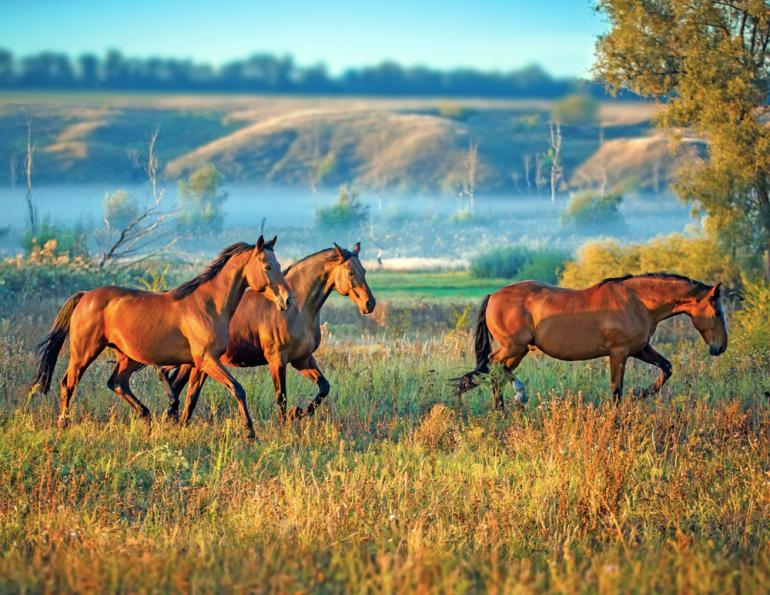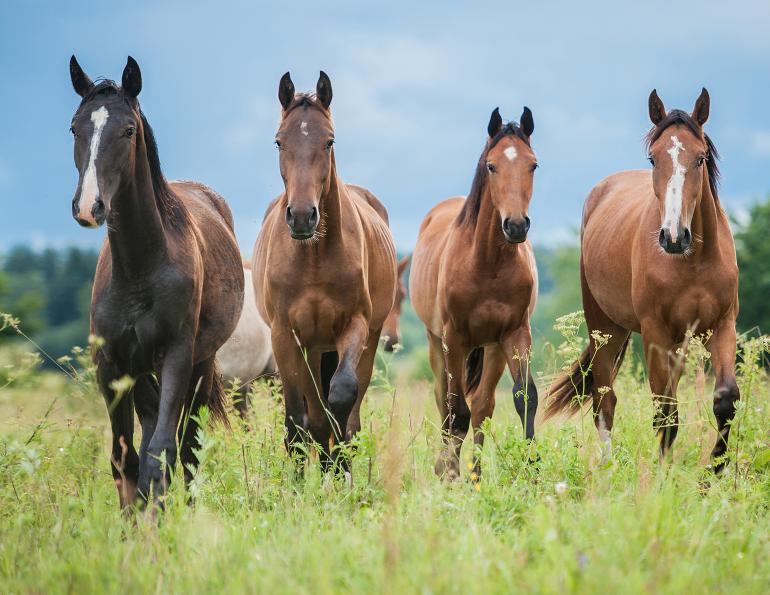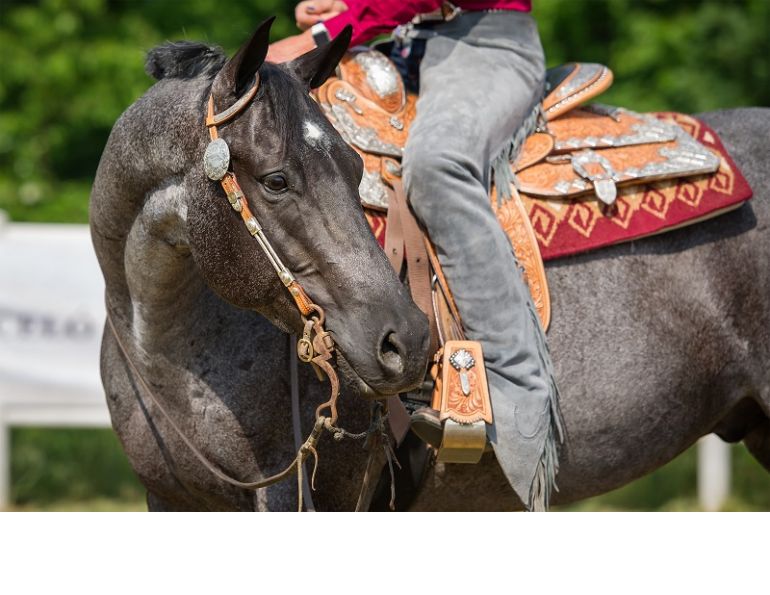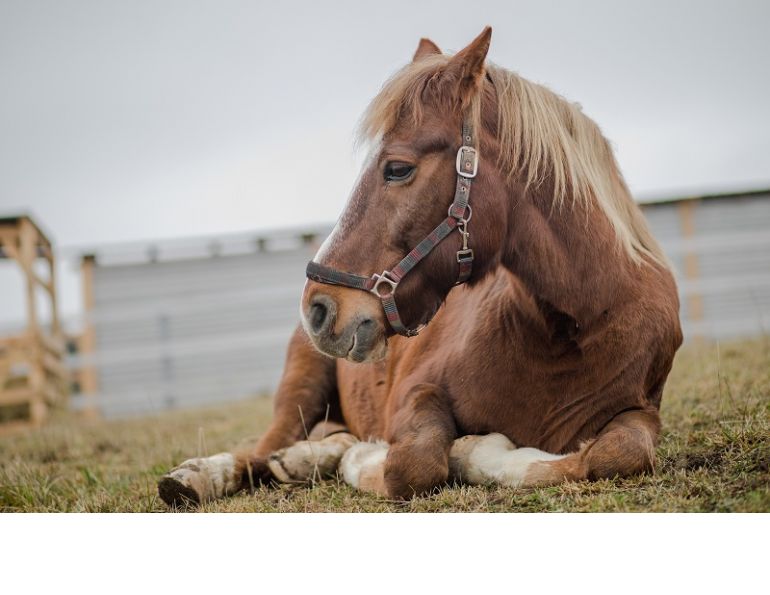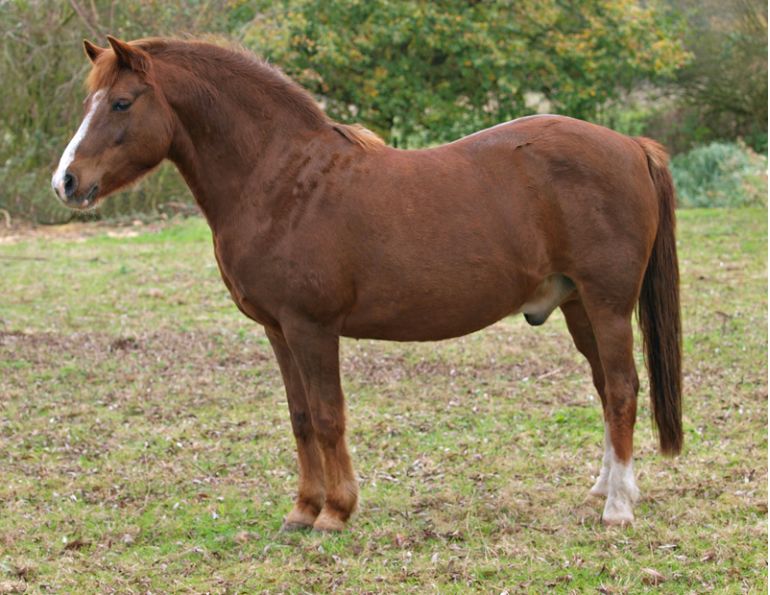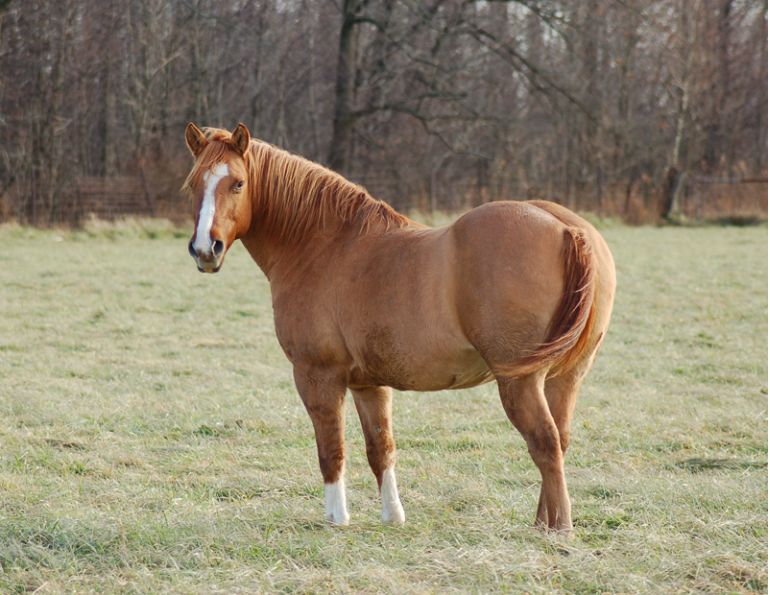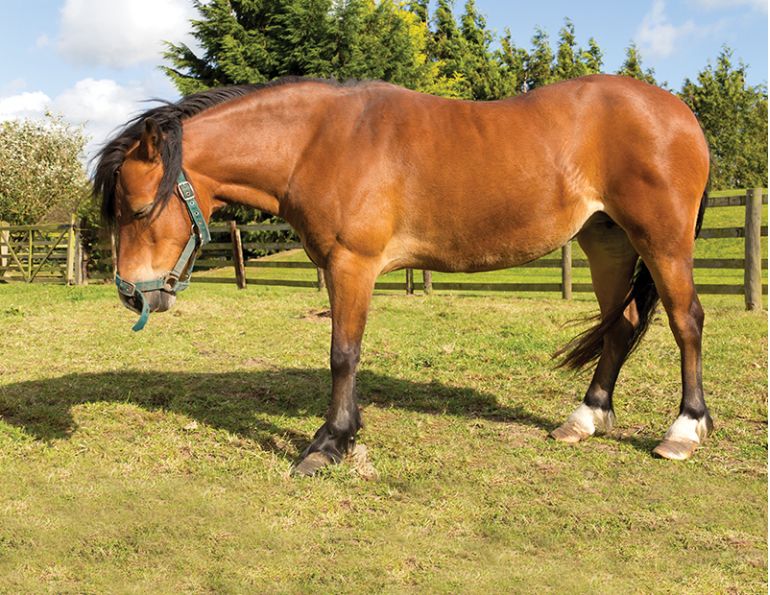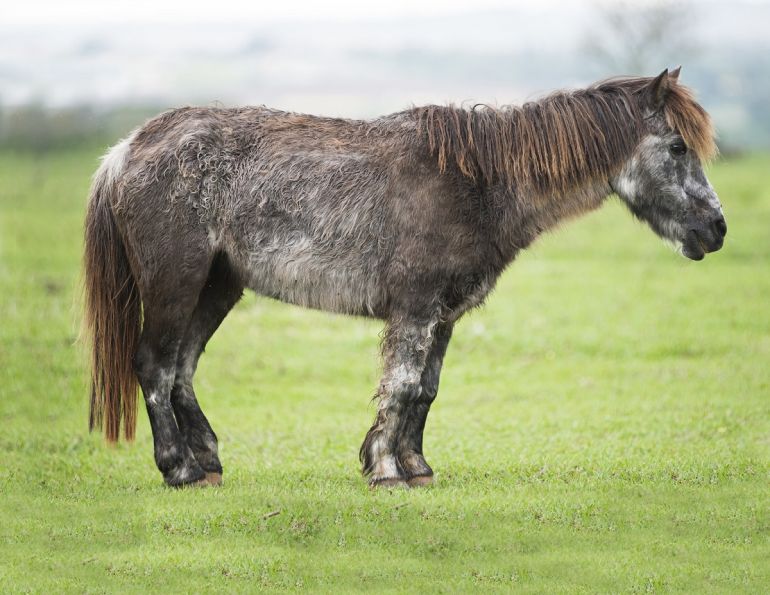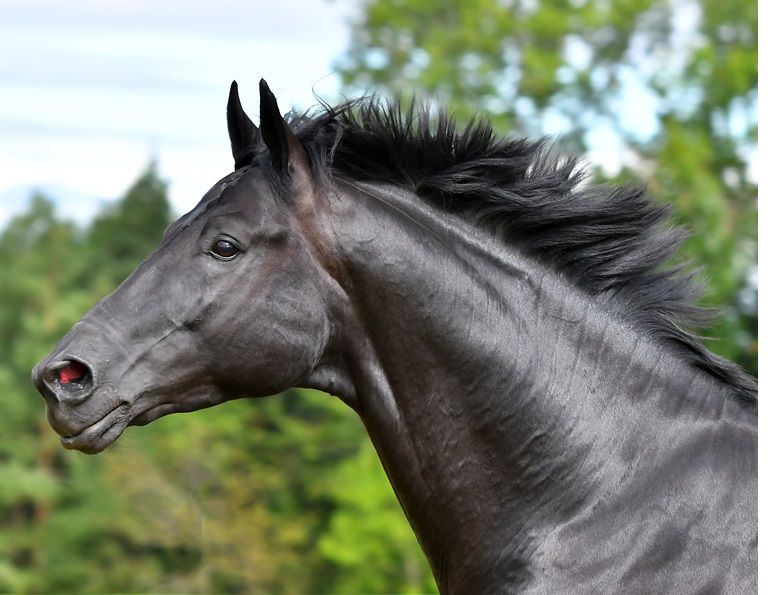By Margaret Evans and Kathy Smith
Each season brings with it certain needs for equine care, and an annual horse health care agenda can help with some of the planning as the months rapidly roll by. Horse owners are good at knowing the value of organizing and preparing ahead to help their horses stay healthy, and to budget for the more expensive seasonal needs ahead of time.
Spring
As crocuses push their way through slushy snow, horse owners breathe a sigh of relief that maybe the worst of winter is over and spring is on its way.
In any horse barn, the coming of spring launches a flurry of activity in preparation for the coming season, and it’s the perfect opportunity to make sure your horse is healthy and ready to go back into regular work.
The pre-season visit from your veterinarian is an important part of the horse’s overall health plan.
“The spring horse health exam can be quite different from a mid-season exam,” says Steve Chiasson, DVM, CVMA. “During the riding season, veterinarians will often be called to investigate a specific problem that is occurring, such as respiratory difficulty at rest, or worsening lameness that is affecting performance. But the pre-season exam is generally focused on a broader view of your horse’s health. It is a snapshot in time that takes into account both medical history and potential future plans for your horse activities. And it is incredibly valuable.”
The spring checkup should start with a good history of everything that has happened over the winter season. “Nobody is more in tune with how things are going than the person who sees the horse every day — and that’s you,” says Chiasson.
The basis of the spring health checkup is a thorough physical exam. This includes an evaluation of cardiovascular, respiratory, and gastrointestinal function, as well as a musculoskeletal evaluation depending on the horse’s history and type of work he does.
As part of this checkup, and before your spring conditioning program begins in earnest, a soundness evaluation by the veterinarian can detect subtle problems before they become more serious down the road. Depending on the horse’s history and the findings of the physical exam, the veterinarian may suggest diagnostic tests that would be of value to you and your horse.
Chiasson explains the three levels of musculoskeletal evaluations that can be done:
- Pleasure and companion horse — every horse should have this level;
- Casual performance horse — for pleasure horses with an above-average level of riding activity, and amateur competitors;
- Performance horse - at this level, a full detailed exam is needed to establish an objective evaluation of baseline soundness, which is valuable if a problem develops later on.
Vaccinations are another staple of the spring vet check. An early spring vaccination appointment will help to protect the horse from bacteria and viruses during spring and summer months, when the likelihood of exposure increases due to travel and the onset of mosquito season. Your veterinarian will recommend the core vaccinations your horse should receive, and risk-based vaccinations depending on various factors including geographical area, your horse’s lifestyle and activities, and medical issues.
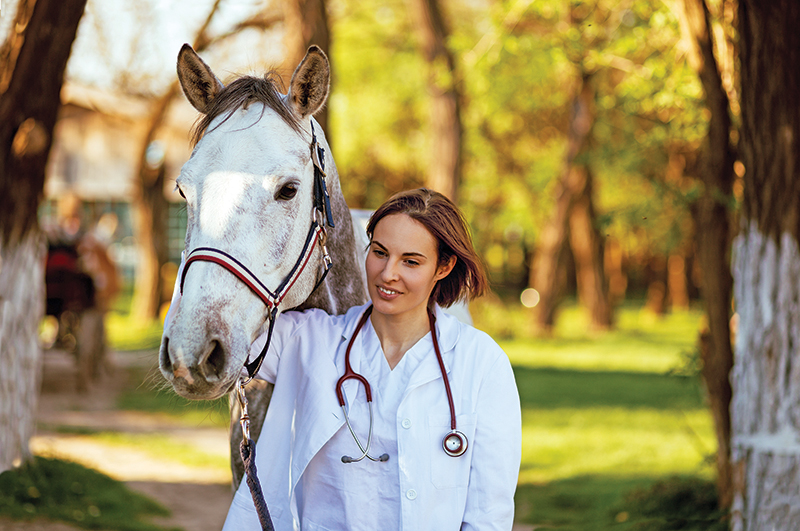
Your veterinarian will recommend the vaccinations your horse should receive, and help you design an effective parasite control program. Photo: Shutterstock/Hedgehog94
The spring checkup includes a dental exam. Ideally, the horse will be sedated for this procedure to allow a thorough examination of the entire oral cavity. If needed, a file or a float will be used to level out the sharp points and overgrown teeth. Because pain tolerance varies from one horse to another, some horses may benefit from having this procedure done more frequently, especially if pain or distraction are exhibited when under saddle.
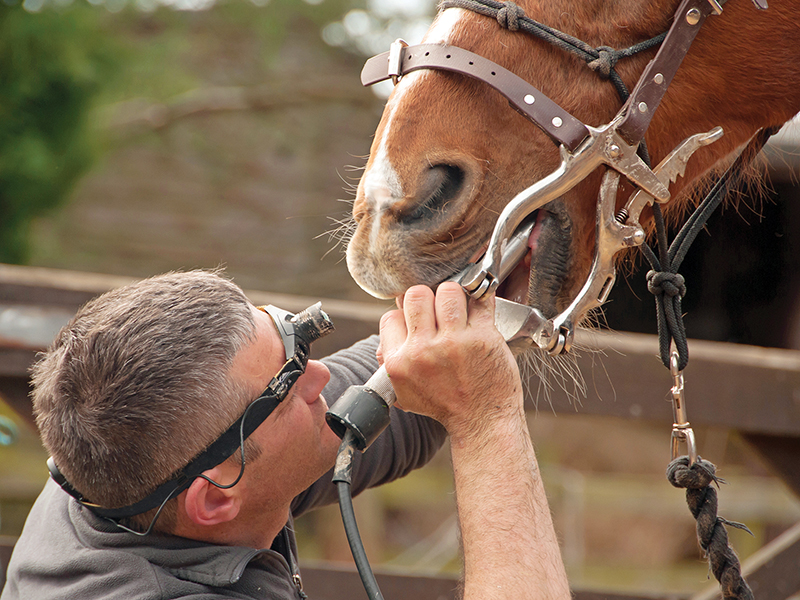
The spring checkup should include a thorough dental exam, and floating if needed. Photo: Shutterstock/Chelle129
With the horse sedated, now is a good time for the veterinarian to check that the male horse’s sheath is healthy, and to clean it if needed. As this is an often-overlooked part of the horse’s anatomy, inspecting and cleaning the sheath should be part of the horse’s annual veterinary checkup.
Talk to your vet about parasite control and fecal testing, and ask for help to design a parasite control program tailored to your horse.
“Fecal testing is definitely a move away from just blindly deworming of horses on a random schedule,” says Chiasson. “Many of the dewormer programs used in the past have been guilty of administering medications at the wrong time, or treating horses that did not actually need deworming. Incorrect and indiscriminate use of dewormer leads to drug resistance and less effective options for when the medications are really needed. Spring checkup is a great time to get a fecal egg count done on your horse.”
The vet consultation should also include an overview of your feeding program, whether your horse needs a special diet to control body condition, and any supplements that should be given. The most important component of the horse’s diet is fibre from pasture grazing or quality hay. Before adding a supplement, the diet should be assessed, to determine what is needed to fill in the nutritional gaps. A high performance horse is more likely to need dietary supplements to support his athletic efforts than a backyard horse with a less demanding workload.
Discuss spring grazing protocols with your vet. A horse that is susceptible to laminitis or equine metabolic syndrome (EMS) could be at risk. Laminitis is the second biggest killer of horses after colic, which is considered the top medical cause of death in horses. The basis of EMS management is to prevent high circulating levels of insulin by avoiding the feeds that cause them, and this means an EMS horse should never be grazed.
Your feeding plan will tie in with your riding goals for the year, as you start your spring conditioning and training program. Any feeding changes should be made gradually, to allow time for the bacteria populations in the horse’s digestive tract to adapt.
To dig deeper into the details of the spring vet checkup, including advice on diagnostics and vaccinations, read Spring Horse Health Checkup.
After their winter layoff, horses should be returned to work gradually. Even if your horse was fighting fit last fall and had plenty of turnout over winter, he’ll have lost conditioning after three or more months of inactivity. Allow sufficient time for the horse to return to optimum body condition, and avoid overworking the horse beyond his level of fitness.
“Any time a horse’s exercise routine drops below three 45-minute work sessions per week for a period longer than four weeks, we consider him to have lost a majority of fitness,” says educator and trainer Jec Ballou. “If he reaches 12 weeks working less than three times per week, his fitness has zeroed out, including any baseline or foundation.”
For the first six weeks of your return-to-work program, Ballou recommends focusing on basic conditioning rather than schooling specific skills and maneuvers. Workouts should be less than 40 minutes, with low to moderate cardiovascular stress and an emphasis on calisthenics-type exercises to engage the horse’s postural muscles. After six weeks, the duration and/or intensity can be increased.
“When making workouts harder in any exercise program, you do not increase intensity and duration of exercise simultaneously,” says Ballou. “During a given workout, you only increase one or the other. For instance, you can make a workout harder by either making it longer or by adding difficult exercises to your normal session length.”
For a sample return-to-work schedule and exercises to successfully bring your horse back into condition, read Spring Conditioning Your Horse: Where Should You Start?
If the horse was blanketed during the winter, change to a lighter blanket as the weather warms. Cool nights and mornings give way to warm spring afternoons, causing horses to sweat and leave the blanket damp and cold in the evening air. Pay attention to changing conditions during the blanket transition period, and remember that horses are better adapted to cold weather than we give them credit for.
With the longer daylight hours, unclipped horses will be shedding their winter hair, and those turned out together will readily groom each other. A good grooming will hasten the process of loosening the hair and take the itch out of the skin. Shedding blades are very helpful, but should not be used on the horse’s bony areas. Hair matted on the belly can be carefully cut away with scissors. Once the shedding process starts, it goes quickly and winter hair is soon replaced by a glossy summer coat.

Water is the most important component of the horse’s diet year-round. Horses should have access to clean, fresh water at all times. Photo: Shutterstock/Sari ONeal
Directly related to the health of the horse is maintenance of its spring and summer home — the paddock and pasture. With the expectation that horses will be outside longer as weather conditions improve, early spring is an important time to do a thorough pasture check. As soon as the snow has melted, walk the fence lines, check the strength and stability of posts and gates, and make any required repairs. Look for trees and heavy branches that may have fallen on the fence, and hidden hazards such as holes, protruding nails, broken boards, and farm equipment left in the pasture last fall.
Water troughs should be thoroughly checked for leaks and general condition, and their maintenance should include cleaning, repair and replacement of valves, floats, and screens as needed.
Natural sources such as streams or ponds should be fenced off to prevent horses from falling through thin spring ice, and to protect riparian areas. If used as water sources in warmer weather, they may still be frozen over, so be sure to continue with your back-up water source.
This is a good time to replace the salt block. Adult horses should consume at least one to two ounces of salt daily. If your horse does not use a salt block, their daily maintenance amount should be added to their feed. The more the horse sweats, the more salt he should consume.
Heavy rain and spring snow melt can cause muddy conditions in pastures and paddocks, creating slippery conditions, and predisposing your horse to pastern dermatitis (mud fever). To prevent pastern dermatitis, provide horses with access to a dry, sheltered turnout area, free from manure and mud where bacteria and fungi thrive.
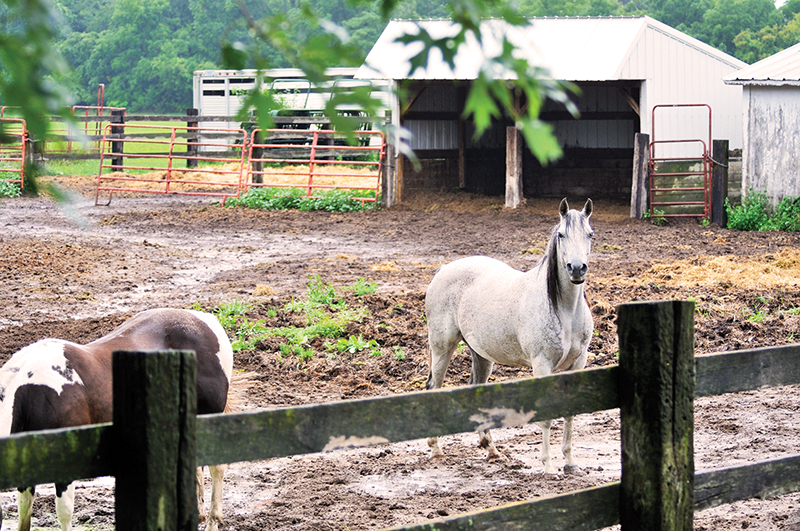
Muddy conditions in paddocks and pastures can predispose your horse to pastern dermatitis, or mud fever. Provide your horse with a dry, sheltered turnout area to prevent this condition. Photo: iStock/Steverts
Summer
Those long summer days filled with sunshine and warm breezes herald the height of riding and competing season. But the season can also be dangerous for horses because the hotter and more humid the weather, the more susceptible the horse is to the negative effects of heat stress.
Horses feel the heat much more than humans, says Prof. Michael Lindinger, an animal and exercise physiologist at the University of Guelph. “It only takes 17 minutes of moderate intensity exercise in hot, humid weather to raise a horse’s temperature to dangerous levels. That’s three to ten times faster than in humans. Horses feel the heat much worse than we do,” he says.
When muscles are being used, they produce a lot of heat. If the horse’s body temperature increases from the normal 37 or 38 degrees C to 41 degrees C, within working muscles the temperature may be as high as 43 degrees C. And the effects can be serious. Heat stress can cause dehydration, lethargy, and a general malaise. Excessive heat stress can lead to hypotension, colic, and renal failure.
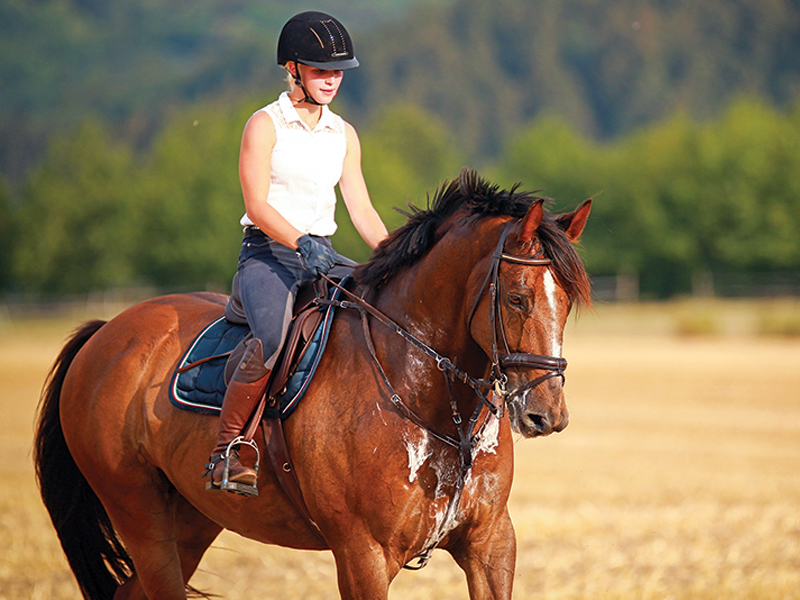
Working muscles create a lot of heat, and horses produce an abundance of sweat to cool themselves by evaporation. The water and electrolytes in sweat must be replenished. Photo: Shutterstock/Rolf Dannenberg
Horses produce an abundance of sweat that is effective in cooling by evaporation, but the salts in horse sweat are four times as concentrated as in human sweat. The water and electrolytes in the sweat must be replenished to keep the horse healthy.
The following practices can help deal with heat-related issues:
- Ensure the horse has plenty of clean, fresh water at all times. Keeping the horse properly hydrated is the most important step in protecting it from the harmful effects of heat.
- Clip horses and ponies with longer hair, especially those with Pituitary Pars Intermedia Dysfunction (PPID) or Cushing’s disease.
- Cool an over-heated horse quickly by repeatedly rinsing the horse’s body with cold water and scraping off the excess.
- Provide ample shade, with trees or a shelter.
- Consider changing turnout times so the horse goes outside in the evening and overnight when it is cooler, and comes into the barn during the heat of the day.
- Install fans in the barn to move the air. Misting the horse with a fine spray can also help offset heat symptoms temporarily.
- During hot weather, ride early in the morning or later in the evening when it is cooler, and reduce the intensity of your riding activities. Exercise generates a great deal of heat.
- If you are travelling to shows, consider evening or night travel to avoid the heat of the day. Even though the trailer windows may be open, the body heat of a hot horse will make the cramped environment hotter and more stressful.
- Protect horses, especially grey or light skinned horses, from sunburn by turning out in the early morning or late evening, providing plenty of shade, and applying sunscreen and sheets.
- Learn how to test your horse for dehydration using the capillary refill test and the skin pinch test.
- In all conditions where heat is causing health-related concerns, consult with your veterinarian.
With the onset of summer, the battle of the bugs begins. Flying insects such as midges, gnats, horse flies, deer flies, black flies, face flies, house flies, mosquitos, and others are more than a nuisance — they can cause serious skin irritations and can also carry diseases.
To get bugs to back off, use a multi-level approach that includes sprays, wipes, and roll-ons; fly masks and sheets to provide a barrier; as well as environmental management to make barns and pastures inhospitable to the insert’s egg-laying needs.
Pest management starts with hygiene in and around the barn. Remove manure and rotting hay or straw, and eliminate standing water in puddles or buckets where midges and mosquitoes breed. Remove rotting leaves and decaying fruit such as windfall apples and wasted berries, all of which become places where eggs are laid. Use fly trap tapes in the barn.
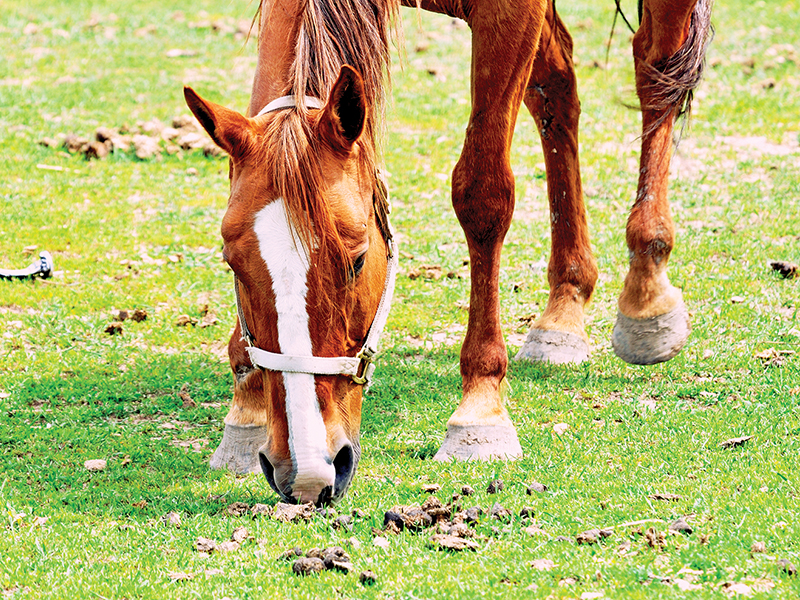
Good environmental hygiene is important to reduce the risk of parasite infestation. Removing the manure from pasture and paddock at least twice a week can reduce the horse’s parasite load by more than 80 percent. Photo: Thinkstock/Steverts
Consider using fly parasites for effective and natural fly control. These tiny wasps do not sting or bite, live their entire life cycle on or near manure where the fly pupa are found, and destroy the next generation of flies in that pupa stage. They are effective against 95 percent of the flies found in manure, including house flies and biting stable flies, two of the most common flies found around horses.
Sweet itch, caused by a Type 1 allergic response to the bite of midges (insects of the Culicoides genus), is the most common allergic skin condition in horses. “The incidence of sweet itch is hard to nail down but, depending on the geographical location, it can be anywhere from 5 to 60 percent of the equine population,” says Dr. Wendy Pearson, PhD (Dr. of Veterinary Toxicology). It causes intense itching along the abdomen, back, mane, and tail, and in an attempt to relieve the itchiness, affected horses often rub furiously causing severe skin eruptions. Sensitive horses should be kept at least 100 metres away from ponds and marshy areas, which are breeding grounds for midges. A fly mask and full fly sheet can help provide protection during turnout.
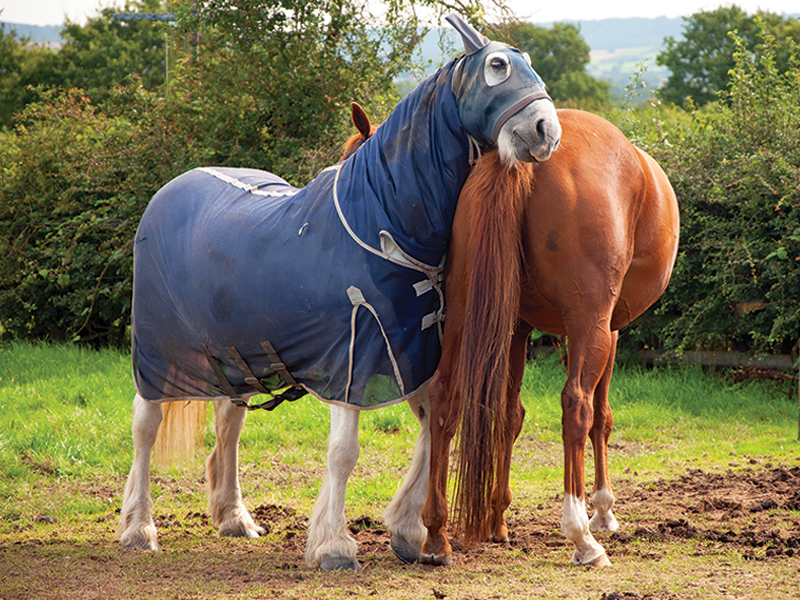
Horses sensitive to sweet itch should be protected with a full fly sheet and mask. Photo: Shutterstock/Chelle129
Learn about harmful weeds and be familiar with those that grow in your area. Horse owners should recognize which plants to avoid and why they appear in pastures. Problems generally arise when pastures have been overgrazed, leaving horses no option but to sample plants they would normally leave alone. We know that “nature abhors a vacuum” and in terms of pastures, a vacuum is an overgrazed area or bare spot with no grass, which weeds will quickly claim.
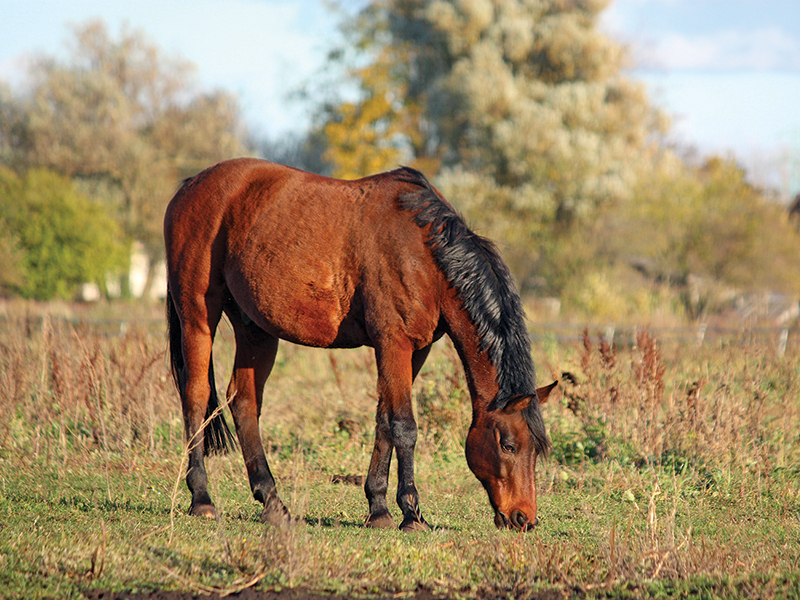
Overgrazing damages grass, compacting soil and encouraging noxious weeds to fill in bare areas in the pasture. Photo: Canstock/Virgonira
Some of the many plants poisonous or harmful to horses include yew, water hemlock, poison hemlock, oak, rhododendron, cow cockle, cocklebur, jimsonweed, nightshade, oleander, field horsetail, buttercups, stinging nettle, bracken fern, St. John’s wort, alsike clover, arrow grass, and barnyard grass. If in doubt about any strange plant in the pasture, remove it and get it identified. The Canadian Poisonous Plants Information System lists over 250 poisonous plants found in Canada, along with their lethal dose (if known) and symptoms of poisoning.
Manage pastures by mowing and rotating horses, to allow grass to thrive and discourage the growth of weeds. As long as horses have enough grass, they will be unlikely to eat poisonous pasture plants.
With the onset of late summer comes a die-off of pasture growth. To keep horses from eating weeds and losing weight, supplemental hay should be offered well in advance of the pasture dwindling. Pay attention to hay supply as the season progresses. The weather will be an indicator of either plentiful hay in the fall and winter, or the danger of short supplies. This knowledge will allow you to make plans for securing quality hay for the coming months, hopefully at a reasonable price.
Autumn
When fall arrives, it’s once again time to assess your horse’s overall health and body condition, as well as his environment. He may need some special attention before winter sets in, especially if older or coming off a busy riding season.
Good nutritional planning will help your horse enjoy the fall and winter season in good condition. With pastures now depleted, horses must rely on their owners to provide them with a nutritionally adequate diet addressing the key factors of water, fibre, and essential nutrients.
Water is the most important component in the diet of any horse.
As drinking tends to decrease with the onset of colder weather, provide an abundant supply of fresh, temperate water to encourage drinking and prevent dehydration, which is a leading cause of impaction colic.
Quality forage is an essential component of the horse’s diet. Stock up on the best quality hay you can afford, making sure it is free of dust, mold, and weeds. If you find the hay you want, but don’t have room to store it at home, paying a hay storage fee is preferable to finding quality hay later in the winter when it’s usually in short supply.
With the show season over, horses usually have some “down time” during fall and winter. A reduction in the horse’s activity level calls for a reduced need for calories, with lower requirements for grain or concentrate feed.
“The protein, trace mineral, and vitamin needs of the horse must be satisfied. Winter is a critical time to supply these nutrients since pasture, a good natural source of nutrients, is no longer available,” says Dr. Tania Cubitt. “Many performance horses are on reduced work or competition schedules and rely on these essential nutrients to repair tissues that have been damaged during the rigors of training.”
It’s a delight to see the colourful trees in autumn, but those pretty leaves can be harmful to our horses. Some that are highly toxic to horses include red maple, eastern black walnut, oak, cherry and plum trees. Do not dispose of raked leaves into the pasture, as leaves are dense and can compact the horse’s digestive system, causing colic.
“Horses like the taste and smell of recently fallen leaves,” says Cubitt. “Be aware of leaves and trees that are toxic to your horse, and fence off wooded areas or fence rows that contain possible toxic substances. If branches fall into the pasture, make sure they are removed immediately.”

Fall leaves are pretty but can post a potential threat to horses. Photo: Shutterstock/Anastasija Popova
Your fall parasite control program should pay particular attention to stomach bots and tapeworms.
Bot flies are honeybee-sized flies that attach their yellowish-white eggs to the horse’s hair coat during summer and fall. The larvae hatch when the horse self-grooms or licks the site, which generates warmth. The ingestion of the larvae and their accumulation in the intestine may create infestation problems. Combat bots by washing off the eggs with warm water, clipping the hair, or scraping the eggs off the hair with a bot knife. Since not all eggs will be caught, your veterinarian may recommend treating the horse with an ivermectin product.
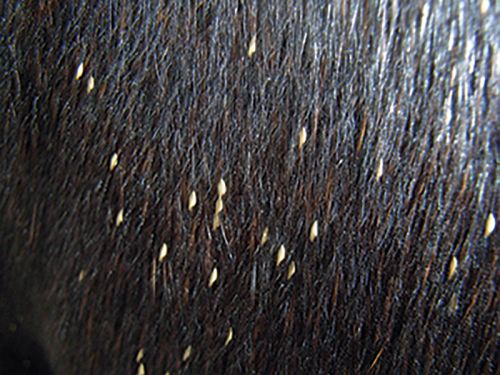
Botfly eggs attached to the horse’s haircoat can be removed by clipping the hair, scraping the hair with a bot knife, or washing with warm water which will cause the eggs to hatch and the larvae to die before they enter the horse’s mouth.
Tapeworm infections are associated with colic and weight loss. Tapeworms have been found in at least 50 percent of grazing horses and their presence should be managed, especially in weanlings and aged horses. Deworming for tapeworms is usually done annually in the fall, based on the veterinarian’s recommendations.
Help your horse transition into winter by making sure he is in good body condition, and dewormed based on fecal analysis.
Decide in early fall whether your horse will be blanketed, clipped, or left “au naturel.” Will the horse be enjoying a winter layoff, or ridden lightly outdoors once or twice a week, or schooled five days a week in an indoor arena? If the horse will continue in steady work throughout the winter, clipping will reduce sweating and allow body heat to escape, making cooling out faster and easier. A clipped horse must be blanketed.
In normal weather conditions, horses with access to adequate forage and shelter will grow a healthy, thick winter coat and will not need a blanket. Horses with special needs, such as older or thin horses, pregnant mares, and those with compromised health, may need blanketing to help them cope with winter conditions. When deciding whether to blanket, consider the horse’s health, age, breed, hair coat quality, feeding regimen, and its acclimatization to existing conditions.
People often make a decision to blanket based on whether they feel cold themselves, but the horse’s winter hair coat is a natural blanket. “People seem to forget that we have only had blankets for horses recently and they have been domesticated for 6,000 years,” says Gayle Ecker, director of Equine Guelph at the University of Guelph, Ontario. “We have to remember that horses have developed their own ways to thermoregulate, and we have to respect that. There are certainly times when a blanket will be beneficial to a horse for specific reasons and for specific time periods, but many horses do not need the blanketing that they are given by their owners.”
Winter
What can we do to help our horses survive and thrive in the cold winter months? The best thing we can do to keep our horses happy and our barn running smoothly during the snowy season is to plan ahead.
Horses allowed to acclimate to cold temperatures usually prefer to be outdoors, as long as they have adequate food, water, and shelter. It’s their ideal environment, providing them with fresh air and meeting their need for movement, and allowing their digestive system to function as nature intended — as long as they are properly cared for.
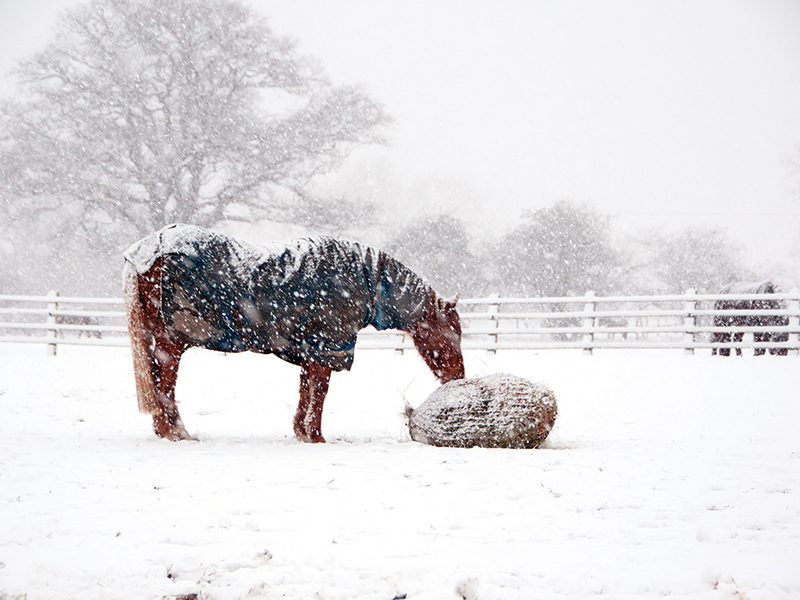
As temperatures drop, provide additional hay to help the horse stay warm and keep his digestive system functioning as it should. Photo: Shutterstock/Chelle129
Water is the most important component of the horse’s diet. Snow and ice are never adequate water sources for horses, yet it is still a common practice in some areas of Canada for horse owners to turn their horses out during the winter with no hay or water provided. These horses are expected to paw through the snow to find forage, and to consume snow to satisfy their water needs.
“An adult horse that is not working or lactating, in a cool and comfortable environment, requires a minimum of seven to ten gallons of fresh clean water per day,” says Dr. Tania Cubitt.
“Research has shown that horses drink the most water when the water temperature is between 45 and 65 degrees Fahrenheit (7 to 18 degrees Celcius), or close to room temperature.
“Impaction colic during the winter months is a major concern,” she says. “This form of colic is mainly due to a horse becoming dehydrated because it consumes less water due to cooler temperatures (no sweating), less water availability (frozen ponds, cold water, etc.), and a diet of hay at 10 percent water content instead of pasture at 80 percent water content.”
Cold water is a hidden cause of dehydration. A study out of Penn State University has shown that increasing water temperature from just above freezing to 4-18 degrees Celsius will significantly increase the amount of water consumed — by up to 40 percent.
The bottom line is: If water consumption is inadequate, the horse will eat less, impacting its body weight and ability to stay warm. In addition, the risk of impaction colic increases because of decreased ability to keep the fibre in the horse’s digestive system hydrated.
Digestion and fermentation of hay is what produces heat that helps the horse maintain his body temperature. This means the horse’s hay supply must be adjusted as temperatures drop.
Like humans, horses have a thermoneutral zone (TNZ), which is an optimal range of temperatures within which they can comfortably maintain their body temperature. Lower critical temperature is the temperature below which a horse needs additional energy to maintain body warmth. For adult horses the range is between 5 and 25 degrees Celcius. Therefore, as temperatures drop, or if the horse seems cold, providing additional hay will help him stay warm and keep his digestive system functioning properly. Grain does not produce large amounts of heat during digestion.
If horses are turned out as a group, scatter the hay in small piles, making more piles than the number of horses, so timid animals are not bullied away by more dominant animals. If your horses are fairly amenable to feeding close together, consider installing a hay feeder or a round bale feeder. Ideally, a hay feeder under an adequate shelter would protect both the feed and the horses.

When feeding a group of horses, scatter the hay in small piles so timid horses don’t get chased away. Photo: Shutterstock/Sari Oneal
Consider feeding hay cubes if quality hay is hard to come by or available inconsistently. Hay cubes are a great way to extend the hay supply and meet nutritional needs. The horses adapt to cubes very quickly and typically enjoy them. Not only that, hay cubes take up less storage space and are lower in dust and mold spores than baled hays, and are easier to travel with.
Horses stabled in winter will benefit from daily turnout so they can move, stretch, roll, and interact. Turnout will minimize respiratory issues, stiffness, and boredom — the bane of many stalled horses. Whether outside during the day or 24/7, horses must have access to either man-made or natural shelter that provides a windbreak from prevailing winds, snow, and rain.
Horses always need fresh air and good ventilation. During cold weather, some horse owners try to keep the barn closed up to make the environment warmer for the humans.
“Good ventilation is more important than providing a little warmth, so be sure to provide good air flow in your barn even in winter time,” advises Dr. Tania Cubitt. With a good air distribution system in the barn, the warm, moist, dusty and smelly air will be replaced with fresh air, and drafts and dead air pockets will be minimized.

Run-in sheds should be located in a convenient location where they will best protect the horses from prevailing winds. They provide better ventilation and a more natural form of shelter than a stall. Photo: Dreamstime/Joan Dawn
Whether blanketed or not, the horse should be checked over daily to assess health and body condition. This should include picking out hooves, looking for wounds, and checking for weight loss or gain. Some horses need special consideration in wintertime, so keep a close eye on hard keepers, senior or thin horses, pregnant mares, and those in poor health. Research has shown that donkeys are not well suited to the cold and do not grow a winter hair coat, so they always need extra protection from our cold Canadian winters.
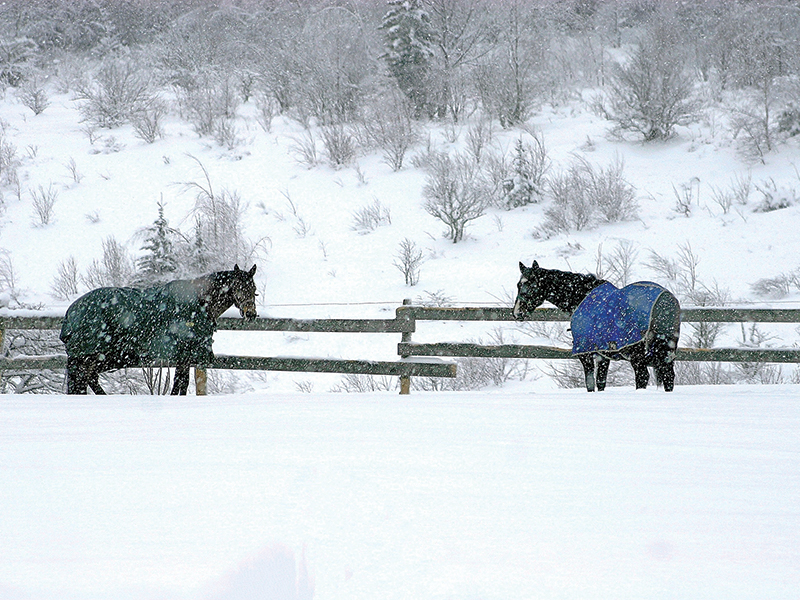
Horses should be checked over daily, especially the area under their blankets. Unblanketed horses should also be checked for skin infections due to wet, matted coats. Photo: Canstock/Dbriyul
Hooves generally grow slower in winter, but trimming should still be done regularly. Barefoot horses have better traction on snow and ice than those that are shod. If the horse is shod, snow pads and studs can help minimize these problems.
Hooves are prone to becoming packed with ice or snow balls during winter, increasing the chance of slipping and falling. Pick out the horse’s hooves daily. One or two taps with a hammer on the side of the hoof will usually dislodge the snowball and cause it to pop out.
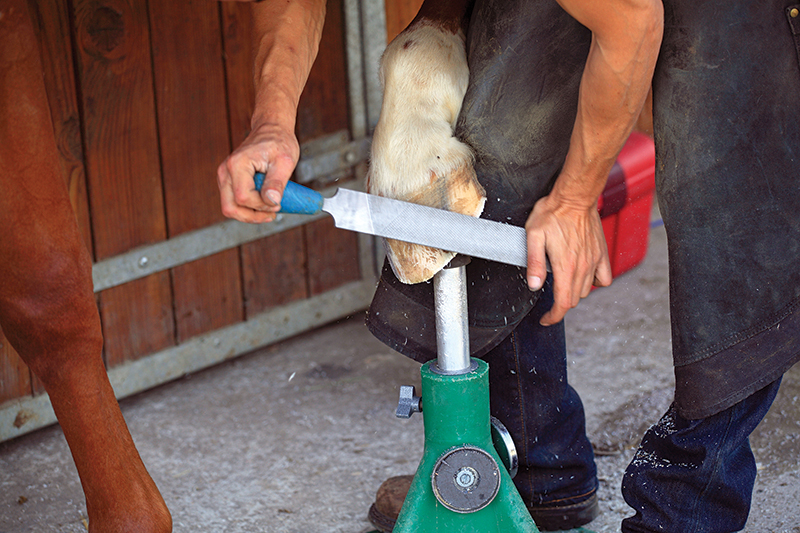
Hoof care is not a seasonal issue, and year-round farrier care is of utmost importance to the horse’s health and soundness. The horse’s hoof care schedule will depend upon seasonal weather conditions, the horse’s function, and the needs of the individual horse. Photo: Shutterstock/JP Chretien
Owning a horse is fun, challenging, and exciting, providing all kinds of competitive and recreational opportunities. Their care and well-being depend on a variety of needs, and as their stewards, we owe it to them to meet those needs to the best of our ability. By planning ahead to keep them healthy and safe, we also make our daily horse-keeping tasks much easier to cope with, and this will maximize our quality time in their company.
Main Photo: Shutterstock/Viktoria Bondarenko



